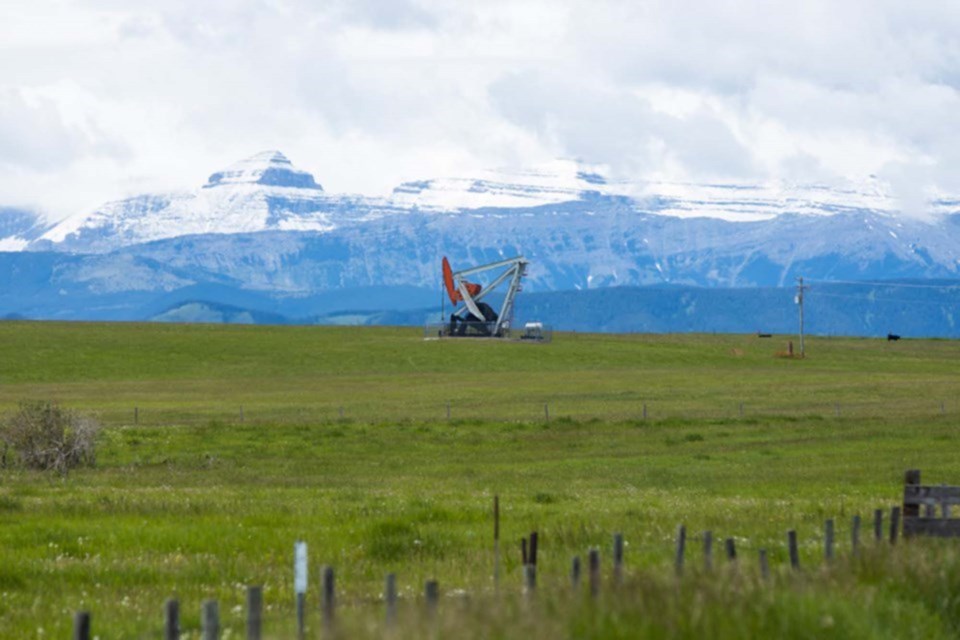Alberta saw a historically high turnaround in provincial fortunes this year after resource royalties skyrocketed the numbers on Alberta’s bottom line.
Last week the province released the year end fiscal report which saw a historic change in provincial fortunes, with Alberta clocking a $3.9-billion surplus, which University of Calgary economist Trevor Tombe said was $22 billion higher than anticipated.
This swing in fortunes is the “largest turnaround in a provincial government’s budget balance in Canadian history,” Tombe said, when adjusted for inflation.
“The swing is completely unprecedented and twice as large as Alberta's previous record set in 1988,” Tombe said.
“It is royalty revenues really increasing to a record-high level largely because of oil prices increasing.”
Oil prices were pegged to sit at $46 per barrel of West Texas Intermediate in the provincial budget, but during the year they hovered higher than predictions and jumped drastically after Russia invaded Ukraine, bringing the average price of oil for the fiscal year up to $77.
By the end of June, the oil price was sitting at $109.78.
The resource revenues helped the province reverse course in the anticipated $18.2-billion deficit for the 2021-22 budget year with some $16.2 billion in resource revenue generated from oil and gas.
“It's energy markets completely rising at an historically rapid pace,” Tombe said.
Commodity prices have been rising since the low they hit during the COVID-19 pandemic, Tombe said, and the Russian invasion of Ukraine constrained the supply of oil on the global market and shot prices of the commodity up.
But what goes up, must go down, said Jason Nixon, Alberta’s new minister of finance in a press conference last week.
With such a provincial windfall, Tombe said he thinks saving the resource revenues would have longer-term benefits for the province because it converts the physical asset of oil into a financial asset, which if properly managed can last forever.
“But reasonable people can disagree. Some may very well prioritize tax reductions or spending increases” Tombe said.
Provincial debt could be paid down if the province chooses to direct the revenue in that way, Tombe said, but that hasn’t always been the case.
“Historically there are many periods where high royalty revenues lead to increased government expenditures and tax reductions,” Tombe said.
That spending would mean dept levels wouldn’t shrink as fast as they could if the money was invested in the Heritage Fund or used to directly repay some of the debt.
Alberta Municipalities president and St. Albert Mayor Cathy Heron said she supports the province saving much of the cash windfall for the future.
"I don't want them to go on a spending spree," Heron said.
However, the municipal leader said there is a "massive amount" of money coming in and she would like to see some of the funding returned to levels before the province makes big cuts.
When funding for municipalities, formerly known as the Municipality Sustainability Initiative (MSI), was started nearly 20 years ago, Heron said they were promised close to $1 billion annually, and that funding has never been realized.
"If we could just get reinstated to that level, to make us whole again, that would be good," Heron said.
In Alberta, municipalities are responsible for 60 per cent of the infrastructure, Heron said, and they only get eight to 10 cents of every tax dollar, so they rely on grant funding.
The mayor also wants to see some of the recent downloading of costs from the province onto municipalities reversed, including compensation for losing fine revenues and reinstating grants in lieu of taxes for provincial buildings in municipalities.
Inflation
With the windfall of resource revenues comes climbing inflation as high resource prices cascade through the supply chain, Tombe said.
“High oil prices is the dominant inflationary force right now by far,” Tombe said.
According to his calculations, Tombe said more than half of the inflation we are seeing in the province is from high energy prices.
Alberta has seen high oil prices in the past, however it is the dramatic swing in prices that is contributing to inflation, Tombe said.
“We have never, not even close, seen commodity prices rise as rapidly as they did in 2021 and through this first half of 2022,” Tombe said.
To help combat inflation and rising prices, the province is giving a gas tax holiday — giving Albertans $150 off their energy bills — Tombe said, which are effective strategies in battling inflation.
And the gas tax holiday is having a measurable effect on inflation, Tombe said, with inflation in May provincially hitting 7.1 per cent, compared to 7.7 per cent nationally.
Almost the entire gap was due to the gas tax.
Nixon said the province will use the windfall to pay down debt and save for the future.
"I think it is incumbent upon us at the moment to ensure that we strategically use these resources to help Albertans through these issues right now, particularly inflation and affordability," Nixon said.
"But do it in such a way that we don't create problems for future governments when those oil and gas prices come back down.”




